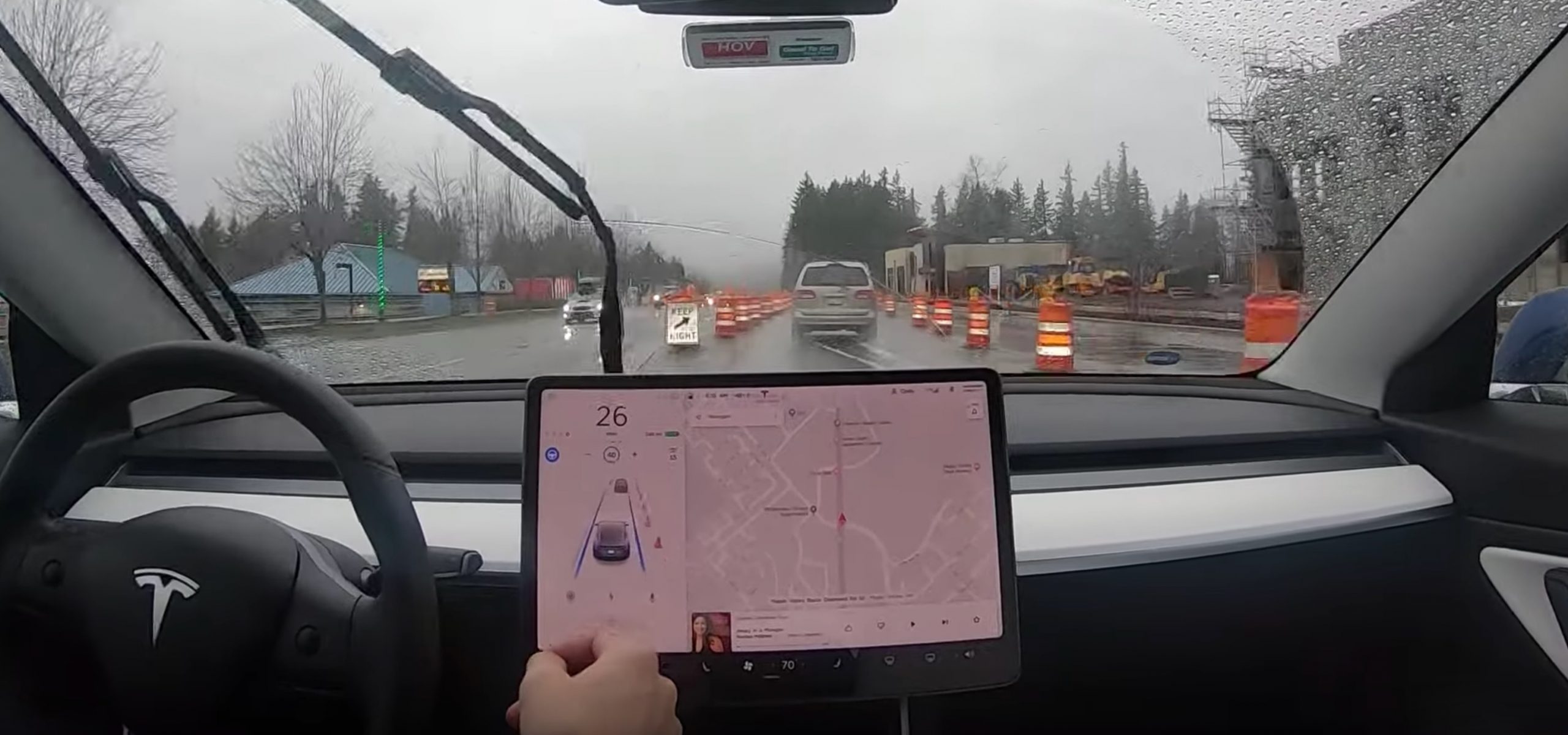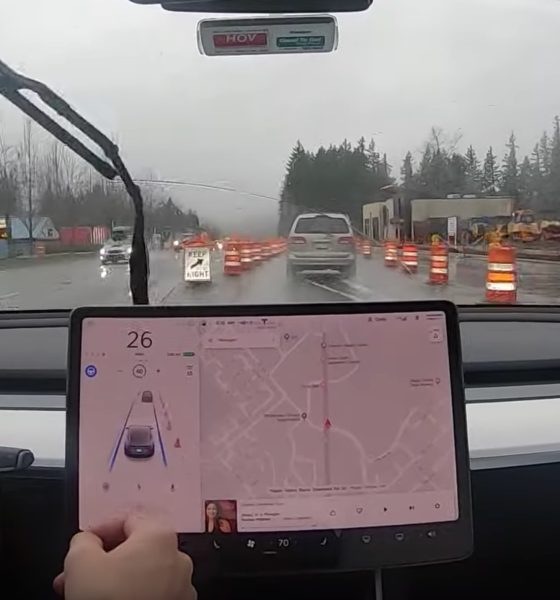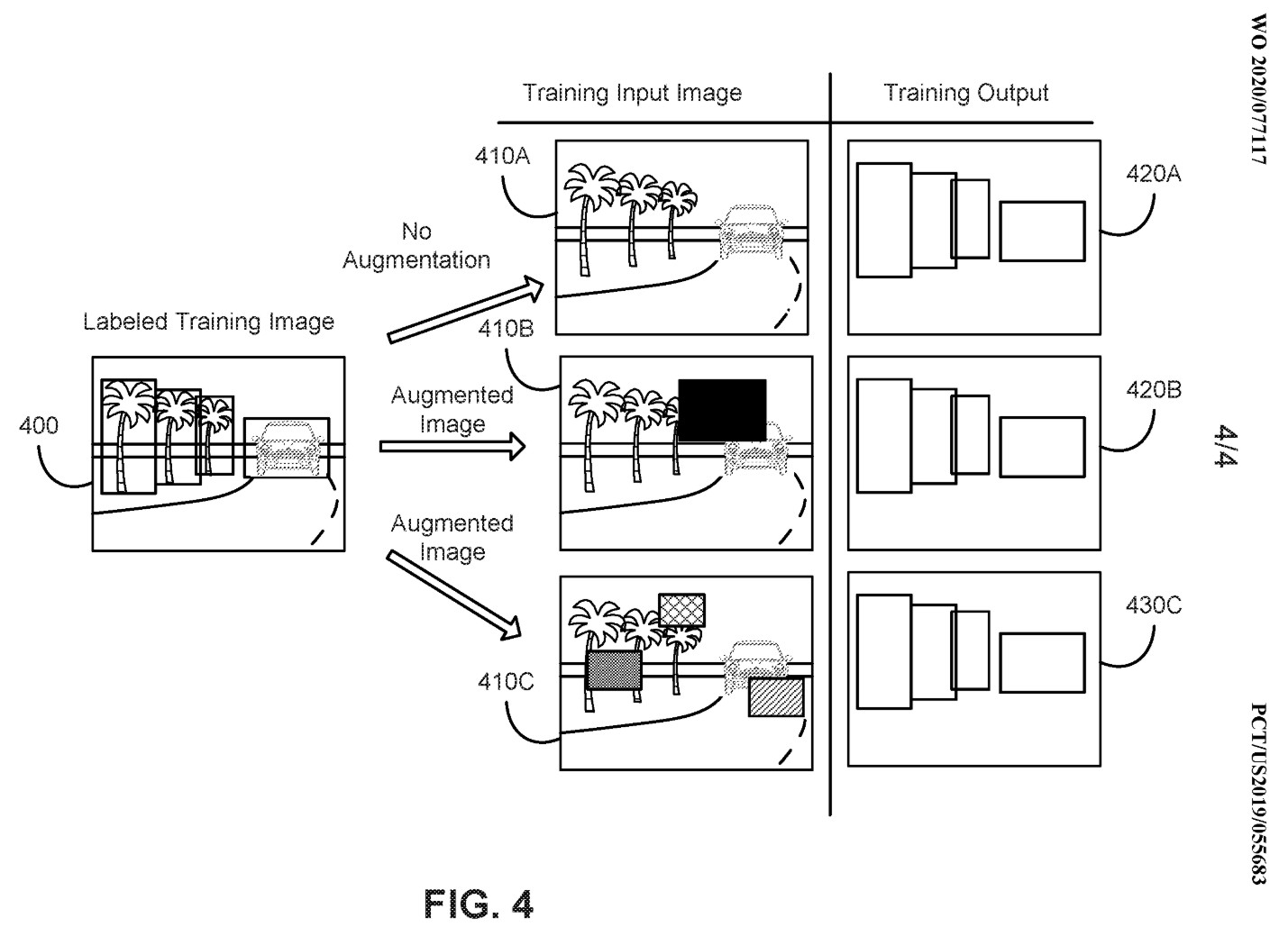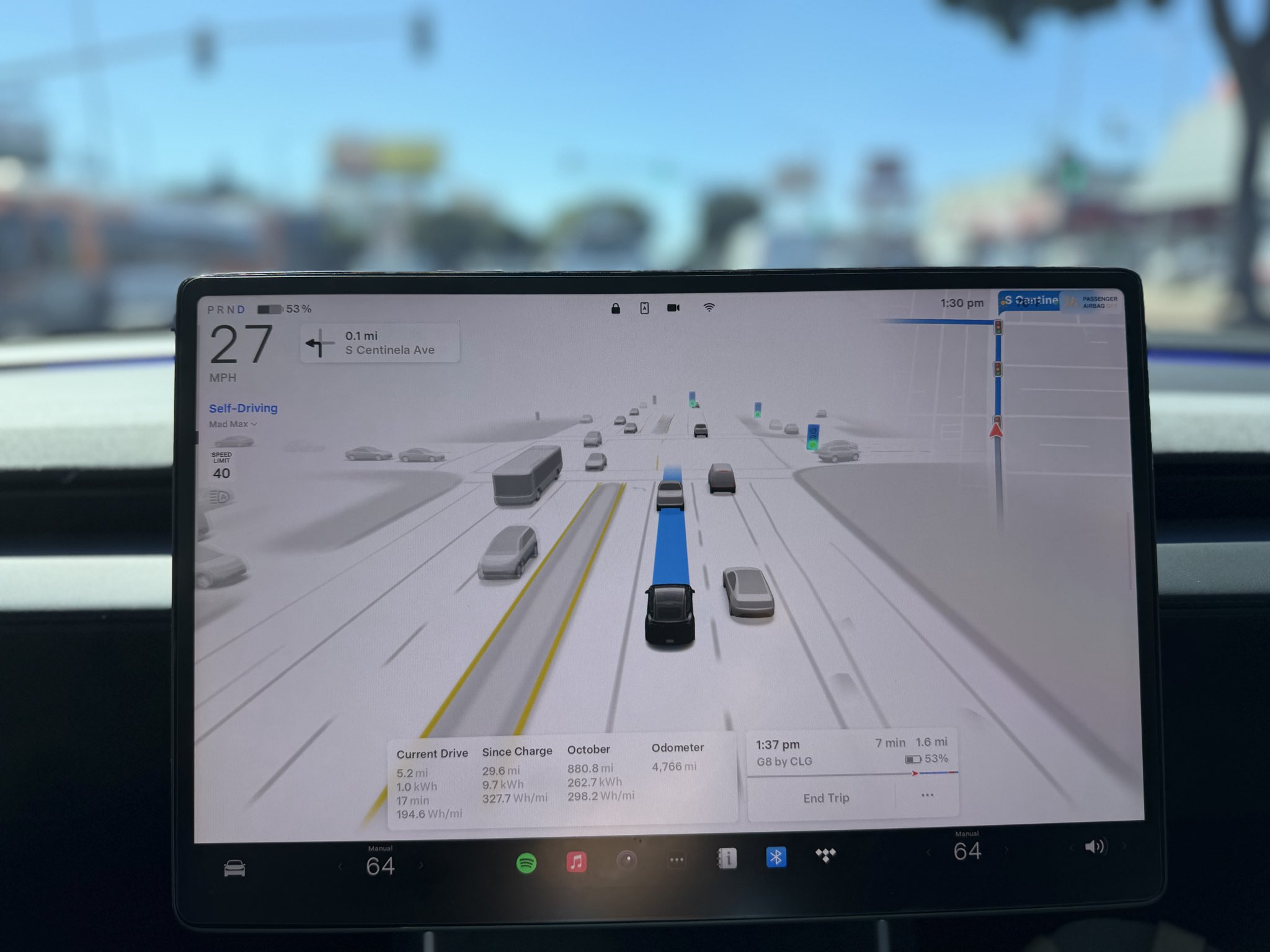

News
Tesla is patenting a clever way to train Autopilot with augmented camera images
Tesla is currently tackling what could only be described as its biggest challenge to date. In his Master Plan, Part Deux, CEO Elon Musk envisioned a fleet of zero-emissions vehicles that are capable of driving on their own. Tesla has made steps towards this goal with improvements and refinements to its Autopilot and Full Self-Driving suites, but a lot of work remains to be done.
As noted by Tesla during its Autonomy Day presentation last year, attaining Full Self-Driving is largely a matter of training the neural networks used by the company. Tesla adopts what could be described as a somewhat organic approach for autonomy, with the company using a system that is centered on cameras and artificial intelligence — the equivalent of a human primarily using the eyes and brain to drive.
Tesla’s camera-centric approach may be quite controversial due to Elon Musk’s strong stance against LiDAR, but it is gaining ground, with other autonomous vehicle companies such as MobilEye developing FSD systems that rely primarily on visual data and a trained neural network. This approach does come with its challenges, as training neural networks requires tons of data. Tesla emphasized this point as much during its Autonomy Day presentation.
With this in mind, it is pertinent for the electric car maker to train its neural networks in a way that is as efficient as possible with zero compromises. To help accomplish this, Tesla seems to be looking into the utilization of augmented data, as described in a recently published patent titled “Systems and Methods for Training Machine Models with Augmented Data.”

Teslas are equipped with a suite of cameras that provide 360-degree visual coverage for the vehicle. In the patent’s description, Tesla noted that images used for neural network training are usually captured by various sensors, which, at times, have different characteristics. An example of this may lie in a Tesla’s three forward-facing cameras, each of which has a different field of view and range as the other two.
Tesla’s recent patent describes a system that allows the company to process these images in an optimized manner. Part of how this is done is through augmentation, which opens the doors to flexible and widespread neural network training, even when it involves vehicles equipped with differently-specced cameras. The electric car maker describes this process as such:
“Augmentation may provide generalization and greater robustness to the model prediction, particularly when images are clouded, occluded, or otherwise do not provide clear views of the detectable objects. These approaches may be particularly useful for object detection and in autonomous vehicles. This approach may also be beneficial for other situations in which the same camera configurations may be deployed to many devices. Since these devices may have a consistent set of sensors in a consistent orientation, the training data may be collected with a given configuration, a model may be trained with augmented data from the collected training data, and the trained model may be deployed to devices having the same configuration.”
Among the most notable aspects of Tesla’s recent patent is the use of “cutouts,” which allow Tesla’s neural networks to be trained using an optimized set of images. This was something that was discussed by former Tesla Autopilot engineer Eshak Mir in a Third Row Podcast interview, where he hinted at a system adopted in the electric car maker’s ongoing Autopilot rewrite that helped lay out “all the camera images” from a vehicle “into one view.” Such a process has the potential to help Tesla with 3D labeling, especially since the images used for neural network training are stitched together. Tesla’s patent seems to reference a system that is very similar to that described by the former Autopilot engineer.
“As a further example, the images may be augmented with a“cutout” function that removes a portion of the original image. The removed portion of the image may then be replaced with other image content, such as a specified color, blur, noise, or from another image. The number, size, region, and replacement content for cutouts may be varied and may be based on the label of the image (e.g., the region of interest in the image, or a bounding box for an object).”
Tesla is aiming to release a feature-complete version of its Full Self-Driving suite as soon as possible. Elon Musk remains optimistic about this, despite the company missing its initial timeline that was set at the end of 2019. That being said, Elon Musk did mention previously that Tesla is working on a foundational rewrite of Autopilot. In a tweet early last month, Musk stated that an essential part of the rewrite involves work on Autopilot’s core foundation code and 3D labeling. Once done, the CEO indicated that additional functionalities could be rolled out quickly. This recent patent, if any, seems to give a glimpse at how these improvements are being done.

News
Tesla FSD Supervised ride-alongs in Europe begin in Italy, France, and Germany
The program allows the public to hop in as a non-driving observer to witness FSD navigate urban streets firsthand.

Tesla has kicked off passenger ride-alongs for Full Self-Driving (Supervised) in Italy, France and Germany. The program allows the public to hop in as a non-driving observer to witness FSD navigate urban streets firsthand.
The program, detailed on Tesla’s event pages, arrives ahead of a potential early 2026 Dutch regulatory approval that could unlock a potential EU-wide rollout for FSD.
Hands-Off Demos
Tesla’s ride-along invites participants to “ride along in the passenger seat to experience how it handles real-world traffic & the most stressful parts of daily driving, making the roads safer for all,” as per the company’s announcement on X through its official Tesla Europe & Middle East account.
Sign-ups via localized pages offer free slots through December, with Tesla teams piloting vehicles through city streets, roundabouts and highways.
“Be one of the first to experience Full Self-Driving (Supervised) from the passenger seat. Our team will take you along as a passenger and show you how Full Self-Driving (Supervised) works under real-world road conditions,” Tesla wrote. “Discover how it reacts to live traffic and masters the most stressful parts of driving to make the roads safer for you and others. Come join us to learn how we are moving closer to a fully autonomous future.”
Building trust towards an FSD Unsupervised rollout
Tesla’s FSD (Supervised) ride-alongs could be an effective tool to build trust and get regular car buyers and commuters used to the idea of vehicles driving themselves. By seating riders shotgun, Tesla could provide participants with a front row seat to the bleeding edge of consumer-grade driverless systems.
FSD (Supervised) has already been rolled out to several countries, such as the United States, Canada, Australia, New Zealand, and partially in China. So far, FSD (Supervised) has been received positively by drivers, as it really makes driving tasks and long trips significantly easier and more pleasant.
FSD is a key safety feature as well, which became all too evident when a Tesla driving on FSD was hit by what seemed to be a meteorite in Australia. The vehicle moved safely despite the impact, though the same would likely not be true had the car been driven manually.
News
Swedish union rep pissed that Tesla is working around a postal blockade they started
Tesla Sweden is now using dozens of private residences as a way to obtain license plates for its vehicles.

Two years into their postal blockade, Swedish unions are outraged that Tesla is still able to provide its customers’ vehicles with valid plates through various clever workarounds.
Seko chairman Gabriella Lavecchia called it “embarrassing” that the world’s largest EV maker, owned by CEO Elon Musk, refuses to simply roll over and accept the unions’ demands.
Unions shocked Tesla won’t just roll over and surrender
The postal unions’ blockade began in November 2023 when Seko and IF Metall-linked unions stopped all mail to Tesla sites to force a collective agreement. License plates for Tesla vehicles instantly became the perfect pressure point, as noted in a Dagens Arbete report.
Tesla responded by implementing initiatives to work around the blockades. A recent investigation from Arbetet revealed that Tesla Sweden is now using dozens of private residences, including one employee’s parents’ house in Trångsund and a customer-relations staffer’s home in Vårby, as a way to obtain license plates for its vehicles.
Seko chairman Gabriella Lavecchia is not pleased that Tesla Sweden is working around the unions’ efforts yet again. “It is embarrassing that one of the world’s largest car companies, owned by one of the world’s richest people, has sunk this low,” she told the outlet. “Unfortunately, it is completely frivolous that such a large company conducts business in this way.”
Two years on and plates are still being received
The Swedish Transport Agency has confirmed Tesla is still using several different workarounds to overcome the unions’ blockades.
As noted by DA, Tesla Sweden previously used different addresses to receive its license plates. At one point, the electric vehicle maker used addresses for car care shops. Tesla Sweden reportedly used this strategy in Östermalm in Stockholm, as well as in Norrköping and Gothenburg.
Another strategy that Tesla Sweden reportedly implemented involved replacement plates being ordered by private individuals when vehicles change hands from Tesla to car buyers. There have also been cases where the police have reportedly issued temporary plates to Tesla vehicles.
News
Czech Deputy excited for Tesla FSD, hints at Transport Committee review
The ANO party lawmaker shared his thoughts about FSD in a post on social media platform X.

Martin Kolovratník, a Czech Republic Chamber of Deputies member, has expressed his excitement for Tesla’s Full Self-Driving (FSD) after an apparent constituent called for a quick approval for the advanced safety system.
The ANO party lawmaker, who drives both diesel and EV, shared his thoughts about the matter in a post on social media platform X.
The official’s initial statements
Kolovratník kicked off the exchange with a post outlining his coalition’s efforts to scrap highway toll exemptions for electric vehicles and plug-ins starting in 2027.
“Times have changed. Electric vehicles are no longer a fringe technology, but a full-fledged part of operations. And if someone uses the highway network, they should follow the same rules as everyone else. That’s the basis of fairness,” he wrote.
He emphasized equity over ideology, noting his personal mix of diesel and electric driving. “For this reason, there is no reason to continue favoring one technology at the expense of another… It’s not about ideology, it’s about equal conditions. That’s why we clearly agreed within the new coalition: the exemption for electric vehicles and plug-ins will end in 2027. The decision is predictable, understandable, and economically sound.”
Tesla FSD enthusiasm
The conversation pivoted to Tesla’s FSD when X user @robotinreallife, who seems to be one of the official’s constituents, replied that other matters are more important than ending highway exemptions for EVs.
“I’m happy to pay for the highway, but I have a question about a much more fundamental matter: The Netherlands will approve the operation of Tesla FSD in February 26, a technology that has been proven to reduce accidents. The Czech Republic has the option to immediately recognize this certification. Do you plan to support this step so that we don’t unnecessarily delay?” the X user asked.
Kolovratník responded promptly, sharing his own excitement for the upcoming rollout of FSD. “I know about it. I like it and it seems interesting to me. Once we set up the committees and subcommittees, we’ll open it right away in that transport one. Thanks for the tip, I’ll deliver the report,” the official noted in his reply on X.
Kolovratník’s nod to FSD hints at the system’s potentially smooth rollout to Czechia in the coming year. With the Netherlands possibly greenlighting FSD (Supervised) in early 2026, Kolovratník’s commitment could accelerate cross-border certification, boosting FSD’s foray into Europe by a notable margin.









